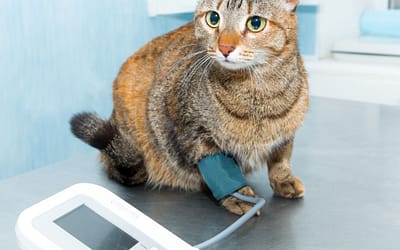Have you ever seen your feline babies munching on some leaves and wondered if there were some safe plants for cats to chew or eat? It might be due to their craving for fiber or if they are suffering from indigestion or simply because they are bored! Some cats even love chewing on wild grass.

Our cats Mira and Akki going bananas over some wild grass we brought indoors
From the many theories on cats’ love for grass, none have been proven scientifically. We can assume that although the reason is unknown, cats do like nibbling on grass. Be it any reason, if your feline friends delight in gnawing, scratching, or pawing at houseplants, let’s give them what they want. But remember safety comes first. Many plants are toxic for cats.
Here are eight safe plants for cats – readily available in India – that your cats are attracted to and can chew on.
1. Wheatgrass – one of the easiest to grow at home safe plants for cats:

Mira and Akki enjoying a fresh bed of wheatgrass
If you want to add additional minerals and chlorophyll to a cat’s diet, then wheatgrass is a great option. Wheatgrass has more than 70% chlorophyll. It also has many minerals that help cats fight inflammation while improving their blood circulation and overall immunity. Wheatgrass can be grown in water; however, it is commonly grown in a soil-filled container.
2. Lemon Grass:
A mild stimulant that offers the same benefits as some other cat-appropriate grasses, lemongrass is a favorite for cats and humans alike. It is a reasonably safe treat for cats and has catnip-like effects. Lemongrass has a host of benefits that are antiseptic, antibacterial, antifungal, anti-parasitic (nematodes), diuretic, sedating, cooling, and helpful with digestion. Some researchers believe Lemongrass may also help cats prevent blood clotting and cancer.
The concentrated essence of lemongrass (essential oil) could be harmful to cats. Unlike people and dogs, they lack certain liver enzymes to break down various compounds that could prove toxic if not eliminated from the body. That is why hydrosols, rather than essential oil extracts of beneficial herbs, are used for various feline health problems. A nibble of lemongrass will not harm your cats, but an intense craving could indicate (rather than cause) some underlying nutritional deficiency or disease such as hyperthyroidism.
3. Mint / Pudina:
We love the smell of mint and so do cats. Mint plants are prolific growers and a popular favorite for cats. It is not unusual to even see cats sniffing and rolling around in mint. Some peppermint may cause an upset tummy in cats if consumed in large amounts.
4. Oat grass:
Oat grass is considered standard cat grass for all breeds of cats. You will generally find oat grass seeds in packages labeled “cat grass” since there is no other use of this product. It’s tastier than other grasses and doesn’t come with any safety concerns for your cat as you’d expect. It is one of the safe plants for cats by acting as a great digestive aid for your cat’s intestinal tract.
Oat grass is full of soluble fibers and protein while also containing essential minerals like iron, manganese, zinc, B vitamins, etc., which positively impact your cat’s digestive health. We bought this cat grass on amazon and were not disappointed with how easy it was to grow. Our cats were quite happy as well.
5. Rye:
Rye is a grass suitable for cats that nibble very frequently. Usually, once the grass like wheatgrass is chewed and perhaps trampled by a cat, it grows but lacks its original spring. However, more durable grasses jump back sooner. Most cat grass will regrow 2-3 times, but rye is remarkably durable and regrows at an exceptional rate. Since it has a shorter length, even if your cat tramples in your ryegrass patch, rest assures it will jump back to its original state quickly.
6. Barley:
Barley is suitable for cats that love to graze on the grass even more frequently. It is a type of cat grass that can proliferate, so if your feline friend has a love for nibbling on grass, give them barley, and they’ll be delighted. It’s tall and can reach up to a height of 14 inches, which is not ideal, so you should be regularly trimming it.
7. Thyme:
This slow-grower is another surprisingly feline stimulant and is often effective with cats for which catnip has no impact—blooms in summer with strong-scented pink flowers. According to the ASPCA, thyme is classified as non-toxic for cats. This herb can be a good source of dietary fiber, antioxidants, Vitamins A and C, Riboflavin, Calcium, Iron, Magnesium, Copper, and Manganese for your pets.
8. Sweet Basil:
Yes, basil is non-toxic to cats and dogs. Whether it’s fresh leaves, cooked or dried, and ground up, consuming basil should not harm your pet. However, it contains no nutritional value to cats, who are obligate carnivores and don’t benefit from plant-based foods. Cats are crazy curious though and feel the need to investigate and sample everything in their environment — so if you have basil growing in your garden, it’s possible that your cat could end up ingesting some. It’s been reported that some cats experience diarrhea or vomiting, but these symptoms appear to be very rare.
Apart from some health benefits, having safe plants for cats means that there is one more thing for them to entertain themselves with. Research all these plants and add to your knowledge about planting them correctly, protecting them from extreme climatic conditions, understanding their germination process, and the time required. This will allow you to grow these safe plants for cats as needed and keep them happy and plant-curious.





0 Comments
Trackbacks/Pingbacks